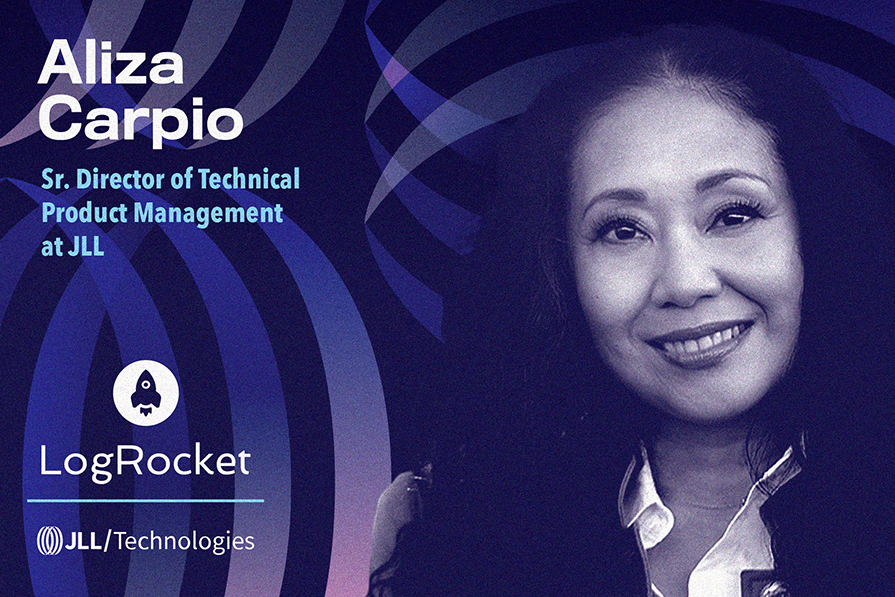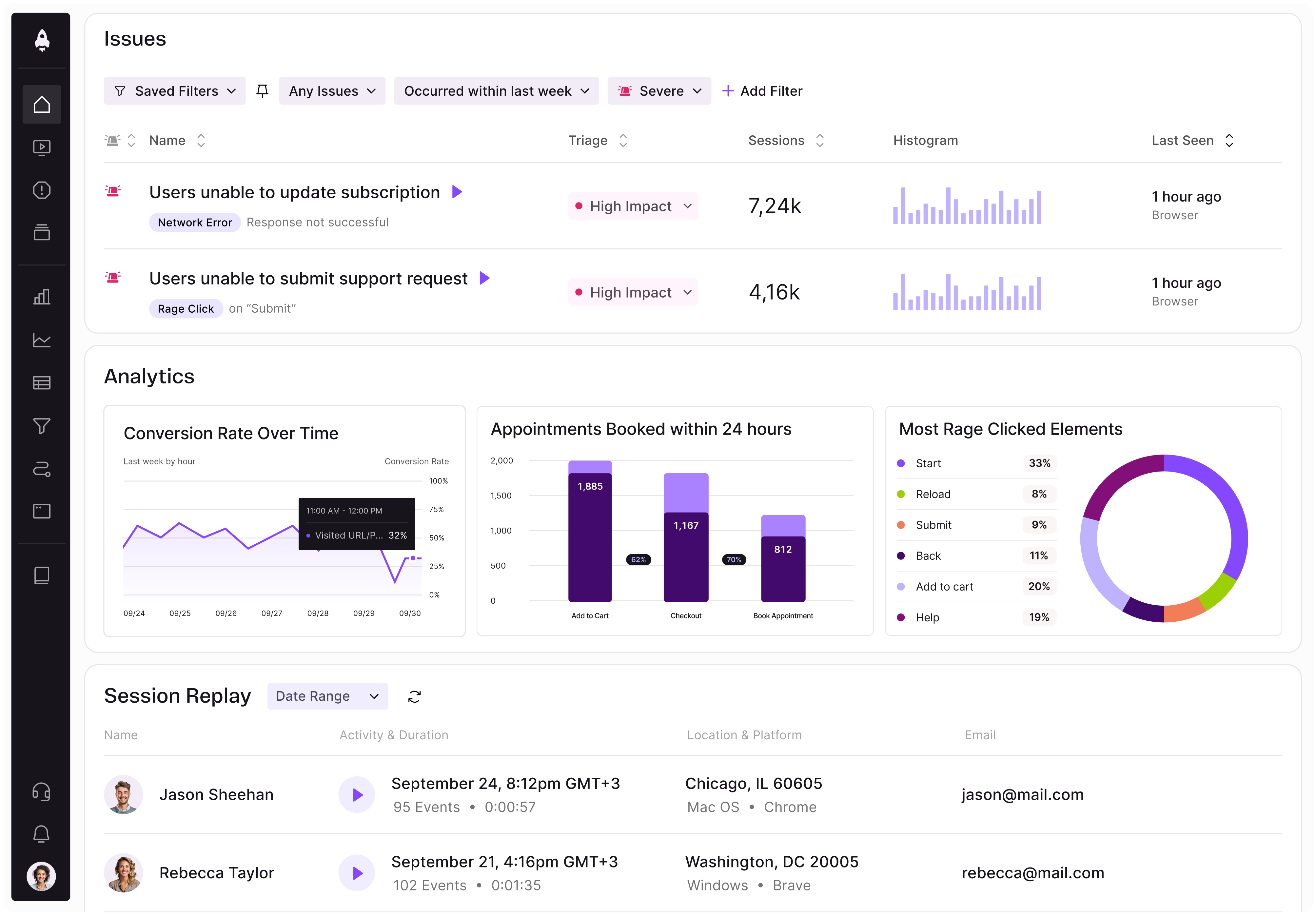Aliza Carpio is Sr. Director of Technical Product Management at JLL and a self-described “passionate community builder.” Aliza began her career at Hewlett-Packard as a frontend engineer and later joined Intuit, starting in systems engineering and eventually transitioning to product management. Following nearly 20 years with Intuit, Aliza served as Director of Product and Tech Evangelist at Autodesk. In her current role at JLL, Aliza focuses on data platform, reporting, and AI.

In our conversation, Aliza talks about the importance of “finding your believers” — people who believe in what you’re trying to do and sit in a role that can help make it happen. She also discusses how she reinforces a culture of always starting with the problem, as well as why it’s crucial to “speak the same language” from the top down.
I authored an article on LinkedIn a few years ago about what developer happiness means, and this post was greatly inspired by Daniel Pink’s book, Drive. He talks about what things motivate people, with the number one factor being purposeful work.
I started out as a software engineer before transitioning to product management, and both of these personas are problem solvers. And solving a problem isn’t just an engineer’s job. I call it a quad — the bottom of a pyramid. The quad includes program management, product management, engineering and architecture, and design and UX. You have to have that base, in the same way it takes four legs to make a stable table or a chair. You have to be speaking the same language, not just to discover the questions but to make sure that everyone is going after the same outcome.
It’s certainly not easy. OKRs come into play to try to measure outcomes for individuals and teams. It all starts with the right problem, but to actually create that environment, it has to start from the top. We all have to speak the same language and solve the right problem, which comes back to the bigger purpose, as Daniel Pink highlighted.
In my current role as Sr. Director of Technical Product Management focused on data platform, reporting, and AI, my partners are engineering and architecture leaders. We need to have an environment and culture where we’re asking questions and seeking to learn. It reminds me of the quote from Leading with Questions by Michael Marquard: “The focus is not on the quest for solutions only, but also a quest for opportunities to explore and to learn.”
I hold in-depth interviews with all different folks who work with our product — both internal users, like people from customer support who use the reports we generate, and external users, like commercial real estate property managers.
Regardless, during those in-depth interviews and discovery sessions, I’m not showing them anything — I’m purely interviewing. I use a feature called JLL GPT to record and transcribe the conversations, which makes it easier for me to focus on listening and summarizing the findings later.
We also have hour-long daily standups to learn about our technology and what has changed in the landscape. We talk through customer problems or opportunities to keep them top of mind. My engineering and architecture partners are also always asking questions. We look at things from not just a building level — we’re in commercial real estate — but from the portfolio level as well.
Essentially, we’re always going to take the time to learn. In the world of AI, I can do as much interviewing and mock-ups as I can, but our release process is the start of our usability. Of course, we’re constantly investing in removing tech debt, but our release is a key learning opportunity. I’m currently involved with a product that’s been out in the wild for three months, and we’re still evaluating its usability. After we interview users, we get together to debrief and say, “What did you hear?” Establishing and reinforcing that culture is really crucial.
I actually learned this approach from other senior product management leaders. My former CTO always made sure we could refer back to the outcome we were trying to achieve, and this prevented us from becoming a feature factory.
For example, we’re not creating an AI assistant just for the sake of saying that we have an AI product — everyone in the industry has one. We’re building our AI assistant because we want to enable our property teams to be more productive and make decisions more quickly so they can focus on what they do best, which is creating awesome tenant experiences. We start our quarterly planning with that outcome in mind. Whenever we raise questions, we ask, “Well, what is the customer really trying to achieve?”
When you start with the outcome and tie it back to the problem or customer need, you might come away with a whole different way of addressing it. And solving a problem isn’t just an engineer’s job, it belongs to the quad — program management, product management, engineering and architecture, and UX. You have to have that strong foundation and everyone speaking the same language.
I’ve learned to look for those who believe in what you’re trying to do and sit in a role that can make it happen. This could be a people manager, but it’s usually more effective to find a tech lead who believes in what you do.
To successfully grow the culture you’re trying to create, you need believers. This mirrors the product adoption graph of early adopters to laggards. To be successful, you only need 10–17 percent of people believing in your cause. I’ve found that if I can influence at least one or two of the tech leads or senior engineers, then this process moves so much faster.
Definitely! I can share an example from my time at Intuit, working on the TurboTax product. Social proof is a commonly used tactic now, like when you’re looking for suggestions of movies to watch on Netflix or clothes to purchase from an online store, the site displays a star rating for the products or listings. However, at the time, social proof was still very new. My manager said, “Well, there’s a lot of tax software to choose from. What if we could show potential users ratings from people who they can relate to who love TurboTax?”
So, I set out to solve this problem. I led a hackathon, where the goal was to develop social proof solutions using unstructured review data to help persuade people to choose TurboTax. Our week-long hackathon was basically a series of experiments to develop a solution that would lead to more people doing their taxes with us.
I took the winning solution to our CMO, and he asked me to prove it out, but not during tax season. Instead, he asked me to prove it out at the end of the summer. I thought this was an impossible time to test a new initiative, because who’s doing their taxes in the summer? Everyone is on vacation! The goal was to get 7 percent more signups compared to historical data during this period. I worked with a group of interns — they were my first set of believers — to run a bunch of experiments testing this new initiative. We ran it for three weeks and had 11 percent more signups than the historical data. We exceeded the goal.
Even though I have my own blinders and biases, I’m always after a holistic decision. I want to arrive at a place where I feel like, even though it’s not perfect, we’ve made a good decision. I learned early in my career that data isn’t perfect. You can augment data with different perspectives and feedback, but at some point, you’re going to need to make a decision on what direction you’re going to take.
For me, it’s all about the balance between qualitative and quantitative data. There’s usually a lot of noise, so identifying clear inputs is crucial. Say my goal is to save property managers 20 percent of the time they spend searching through emails to identify tenants who haven’t paid their rent. In that case, I’m going to talk to customer success people who actually speak with property managers and directly hear about their pain points.
I’ll then talk to finance folks about the impact of having tenants in arrears, as well as other senior leaders in my industry, to understand what happens to the investment if we don’t collect on those rents. That’s just a set. Then, I’ll talk to engineers to figure out what we can distill from the data to help predict this behavior without requiring the property managers to dig through emails.
In the US, 85 percent of consumer purchases are made by women. 50 percent of products marketed to men are purchased by women, and an even higher percentage of financial decisions in a household are made by women. Keeping those numbers in mind, it’s clear that we have to work together to deliver products and experiences that represent actual consumers. We don’t have a choice.
How does diversity play into how you develop? Well, the same answer applies — it has to because we don’t have a choice. Many times, I am the only woman in the room. I feel like my role is not only to inspire others to learn and be a part of things as they evolve, but it’s also up to us to bring everyone along. It’s up to us to really learn what this is all about, how we can participate, and how we can be heard.
I remember when Apple’s assistant, Siri, first came out. If you had any kind of accent that wasn’t mainstream American, it wasn’t able to understand you. We also realized that it had an especially hard time understanding women’s voices compared to men’s. This was a tool that was supposed to help us, and yet it was so biased. If we don’t start being part of the solution and becoming an active voice, we won’t be able to improve experiences for women — who, again, are responsible for 85 percent of consumer purchases.

LogRocket identifies friction points in the user experience so you can make informed decisions about product and design changes that must happen to hit your goals.
With LogRocket, you can understand the scope of the issues affecting your product and prioritize the changes that need to be made. LogRocket simplifies workflows by allowing Engineering, Product, UX, and Design teams to work from the same data as you, eliminating any confusion about what needs to be done.
Get your teams on the same page — try LogRocket today.

A practical framework for PMs to use AI in ideation without sacrificing judgment, strategy, or decision quality.

A practical five minute revenue estimation method to help product managers compare ideas, drop low impact features, and prioritize smarter.

A practical guide for PMs who want to stop being bottlenecks, delegate smarter, and lead teams effectively with a clear ownership framework.

Stop letting unreliable data block features. Treat data as inventory to track quality, ownership, and ship with confidence.